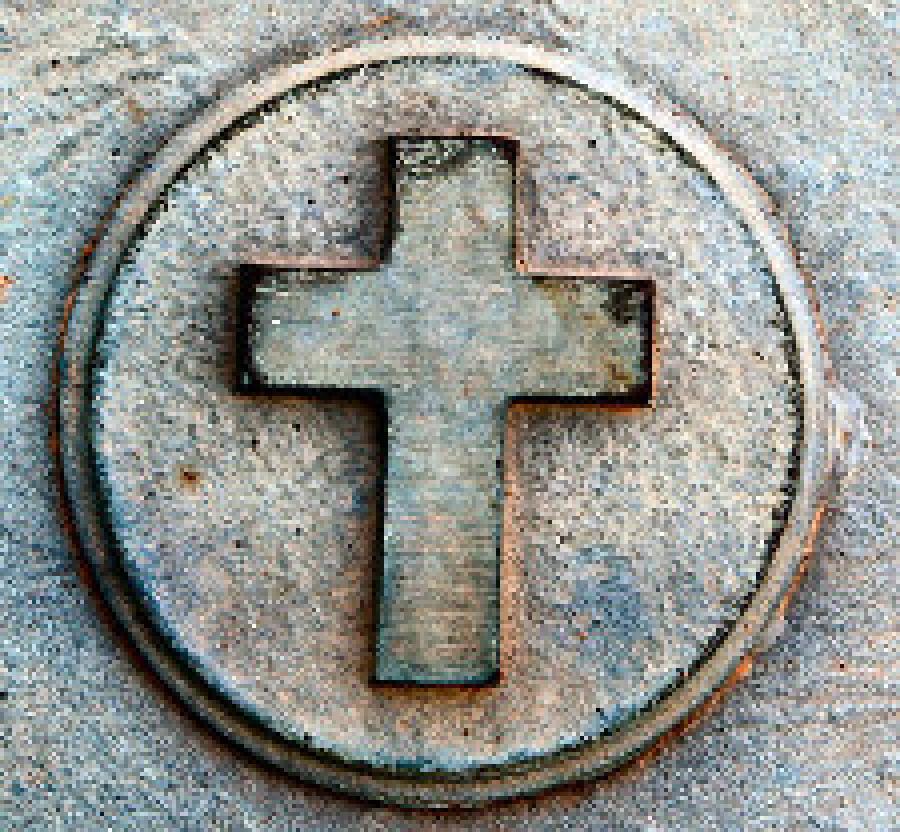The Cruciality of Christ, Part 2
Image

Read Part 1.
We have been considering the centrality of the Person of Jesus for an understanding of ourselves in the created order. We continue with a look at the Prologue to John’s Gospel.
In the beginning was the Word, and the Word was with God, and the Word was God. He was in the beginning with God. All things were made through him, and without him was not any thing made that was made. (John 1:1-3)
So again, this shows us that Christ is right at the very center of the creation. In fact, creation is made for Him, and not only through Him. It is not that God used the Second Person to make the world and then He had no further interest in it. No, these things were made for Him and nothing was made unless it was made through the agency of Jesus Christ and to the satisfaction of Jesus Christ as the Second Person of the Trinity.
As we are told here in John 1:1, “In the beginning was the Word”—that Word is to be equated, as it is by John, with the words spoken by God in Genesis 1:
In the beginning, God created the heavens and the earth. The earth was without form and void, and darkness was over the face of the deep. And the Spirit of God was hovering over the face of the waters. And God said, “Let there be light,” and there was light. (Genesis 1:1-3)
That “saying” or “speaking” of God was not just in audible words. It didn’t require audible words any more than the healing of the centurion’s servant required them. In all probability there would not have been any other creature around other than God to hear them. But the Word was the expression, the idea of God’s mind and will coming through the instrumentality of the Second Person of the Trinity, whom John calls the Logos.
With this introduction John insisted Jesus’ origin and nature are incomprehensible if seen solely in terms of this world. Only when we read it in the light of his pre-incarnate deity does Jesus’ story makes sense; that is why this prologue is here. It tells us who the subject really is so we can better understand his story. To show Christ’s preexistence requires that it identify the Word with Jesus, which the prologue does in John 1:14-17. (Douglas McCready, He Came Down from Heaven, 140)
What McCready has said here is most important for us to get. To repeat, we must start in our study of Jesus Christ by realizing who He really is: that He is God; that He is the pre-existent personal Deity. Unless we do that, we don’t grasp John’s message. Neither can we have a satisfactory Christology. McCready continues in connection with John’s prologue:
Much of this passage has parallels in contemporary Jewish and Hellenistic literature, but when we get to verse 14, “the Word became flesh and made his dwelling among us,” we find a statement that would scandalize both Jew and Greek. The extra-biblical parallels that do exist provide little more than points of contact for John’s message; none determined how John would describe Jesus. (McCreedy, 140)
John does not rely either on the Greek concept of the Logos or on the Hebrew concept of the Dabar-Yahweh—the word of the Lord.
The concepts of logos [Greek] and word [Jewish] both pointed to something of universal significance that had its home outside the temporal world, although each affected the world and played a role in its coming into existence. So when John wrote of the logospeople may not have understood precisely what he was saying but they knew he was talking about something very important. John’s key differences from these two traditions were to present the Logos as someone not something, to affirm his complete deity, and particularly for the Greeks, to proclaim he had taken up residence in this world. The ancient world had no trouble with supernatural beings and little difficulty with the reality of this world, to the Hellenists; however, the Divine could not contaminate Himself by entering into the physical realm. Jews were familiar with theophanies in the Old Testament but these were not incarnations; God was spirit and so could not become part of the physical realm. The Hellenists could follow John until verse 14 when he would be horrified by the thought of the “word becoming flesh.” Conversely a Jewish reader would object to the anthropomorphism implicit in the claim that a man known to history was himself the revelation of the invisible God rather than an inspired messenger like the prophets. Only a few verses often introducing this Logos Word, John identified him as the man Jesus of Nazareth. (McCready, 140-141)
This is what we must grasp right off the bat! We must fully ponder the great significance of the designation “the Logos,” but within the safe confines provided by Scripture’s own definitional framework. The One “through whom and by whom and for whom all things were created and cohere” (as Paul puts it), enters our world, becoming flesh.
Therefore, the doctrines of the full deity of Christ and the personal preexistence of Christ are critical to a correct Christological outlook. But further, because He is also our Creator, our understanding of the creation and our place in it should be Christologically conditioned.
We see this truth surface more once we connect the original creative work of Christ with the redemptive work of Christ. (I know there is something anachronistic about referring to the Creator as “Christ” before His Incarnation; the anachronism is lessened considerably by the knowledge that the Second Person and the Messiah are identical). As we’ve seen, He is the One for whom everything is created, and He is the One who upholds all things—even now upholding a fallen creation. He not only continues to uphold a fallen creation, but also especially a fallen humanity. Because of this, the Incarnation—His becoming flesh and entering our space to do nothing less than allow Himself to be abused and humiliated and betrayed and murdered by His creatures in order to save them—is indeed nothing short of astounding! No wonder the angels desire to learn more of this—this “through Him and for Him”!
He is the one who takes away the sin of the world, and He is the One who will renovate this planet and restore it to Edenic beauty (Rom. 8:18-23), and rule on it until He has made it into something He can present to His Father (1 Cor. 15:20-28). It was in the knowledge of this work that He instituted the Lord’s Supper (Mk. 14:22-25), and promised:
This is My blood of the new covenant,
which is shed for many.
Assuredly, I say to you, I will no longer drink of the fruit of the
vine until that day when I drink it new in the kingdom of God.
This One has entered this “present evil age” and has died on the Cross for the sins of mankind and has risen again for our justification and for our hope. And He is coming again as the coming King to reign over this creation. Indeed, it is precisely because this world is Christ’s world that I must reject any theology which would assert that the returning King will come only to dispense with it and replace it without making something worthy of it despite the stain of Sin having penetrated into its very fabric. Although the curse cannot be lifted from off of this earth, and it will eventually have to be replaced with a “New Heaven and New Earth” where “there will be no more curse” (Rev. 22:3). Yet the stain of Sin will not prevent the Savior from delivering it up to the Father for His approval and blessing. This is one important theological apology for premillennialism.
We can see therefore the cruciality of Jesus Christ! It is not just an article of faith. But this is the way that history is—the explanation for why we’re here and where things are going and what is going to be the end of all things. And the end of all things will be all about the Person of Jesus Christ!
Paul Henebury Bio
Paul Martin Henebury is a native of Manchester, England and a graduate of London Theological Seminary and Tyndale Theological Seminary (MDiv, PhD). He has been a Church-planter, pastor and a professor of Systematic Theology and Apologetics. He was also editor of the Conservative Theological Journal (suggesting its new name, Journal of Dispensational Theology, prior to leaving that post). He is now the President of Telos School of Theology.
- 3 views

Discussion